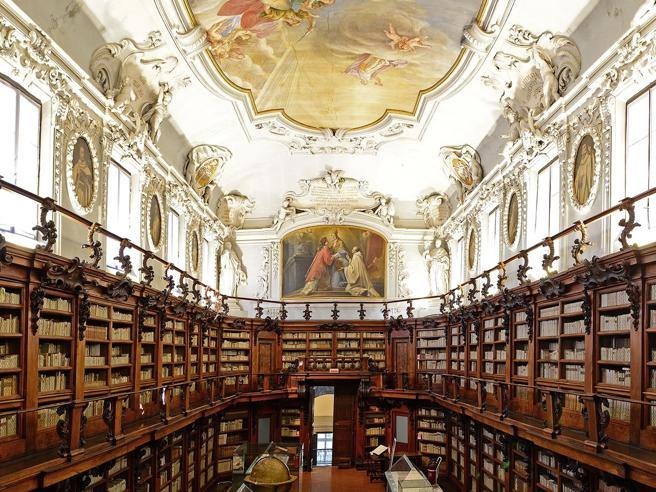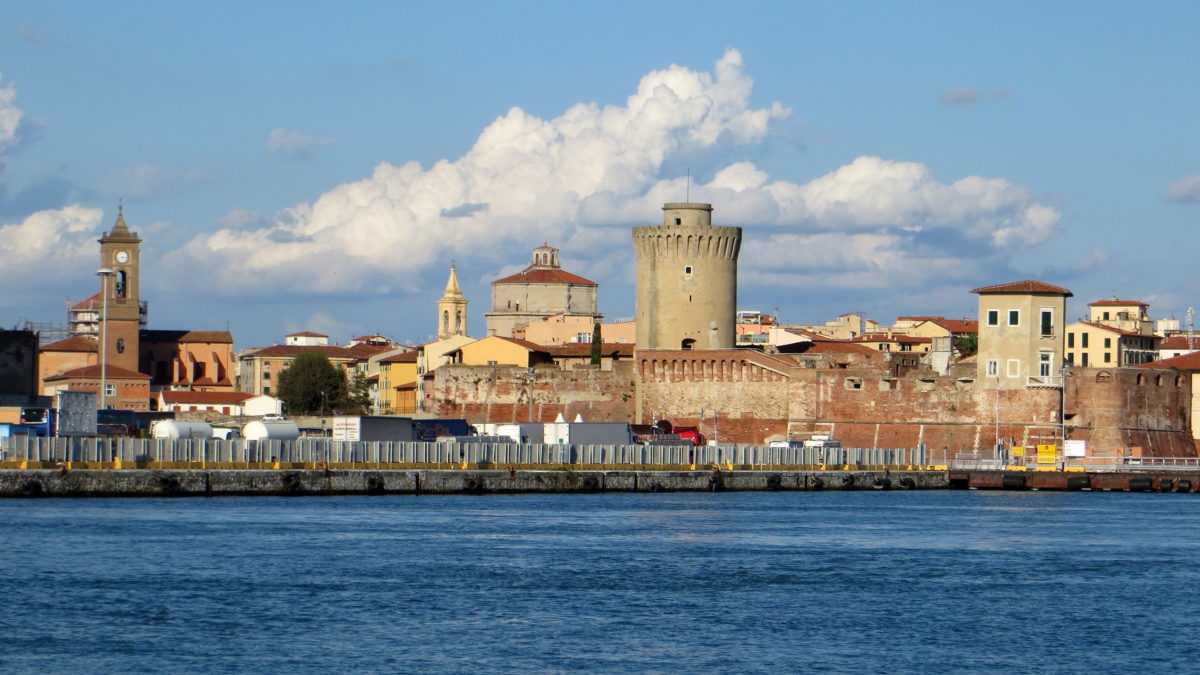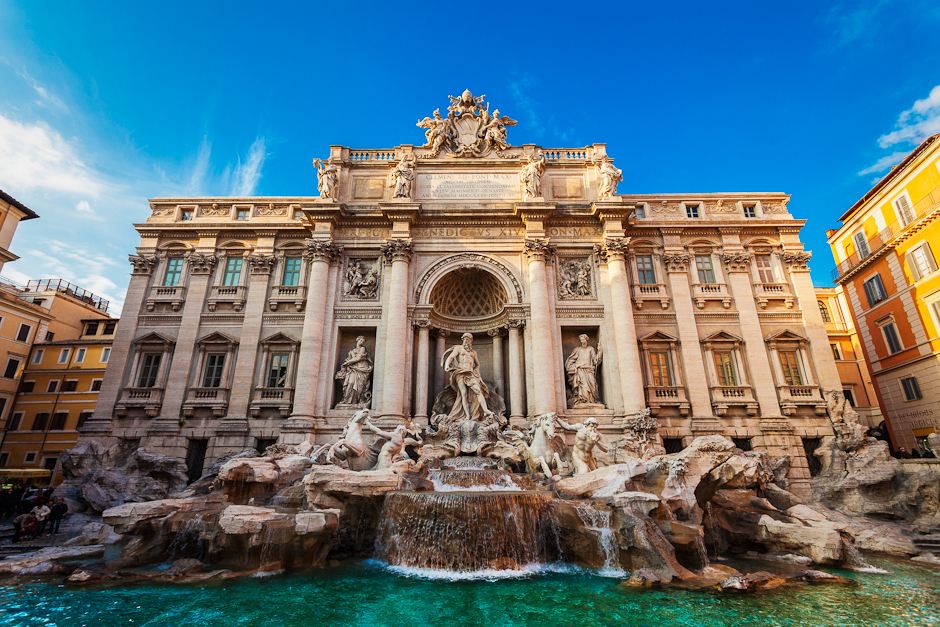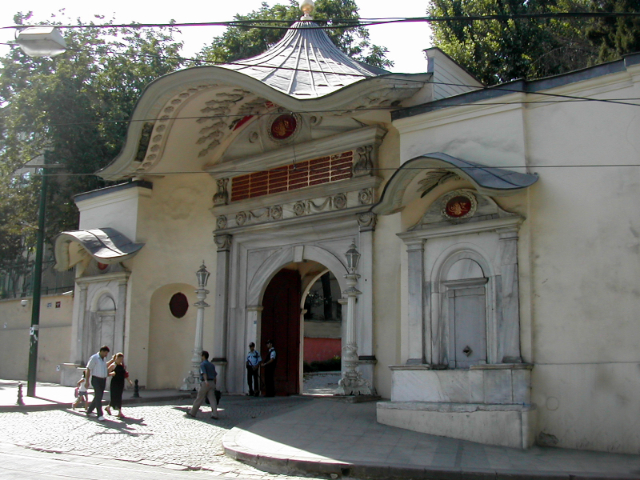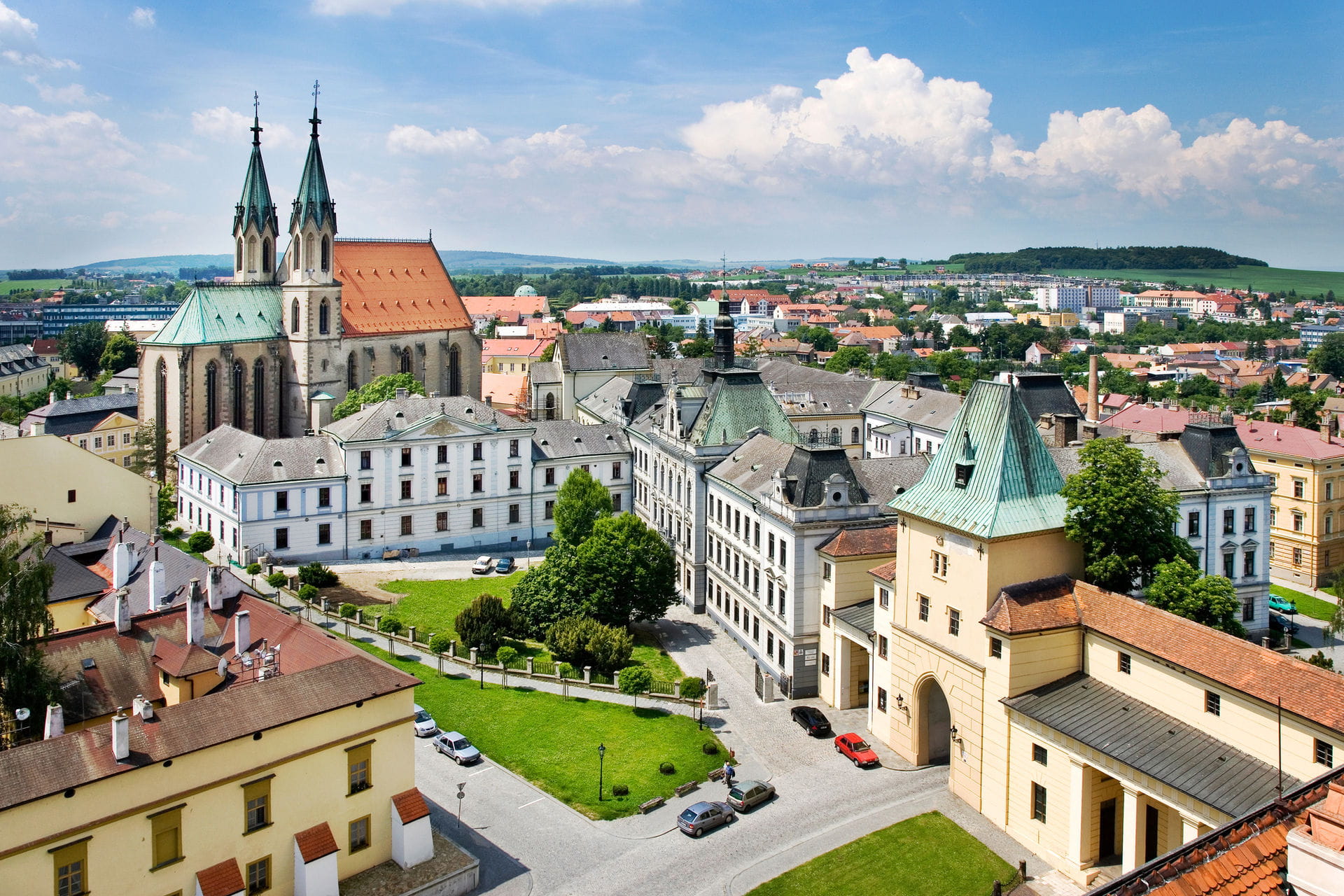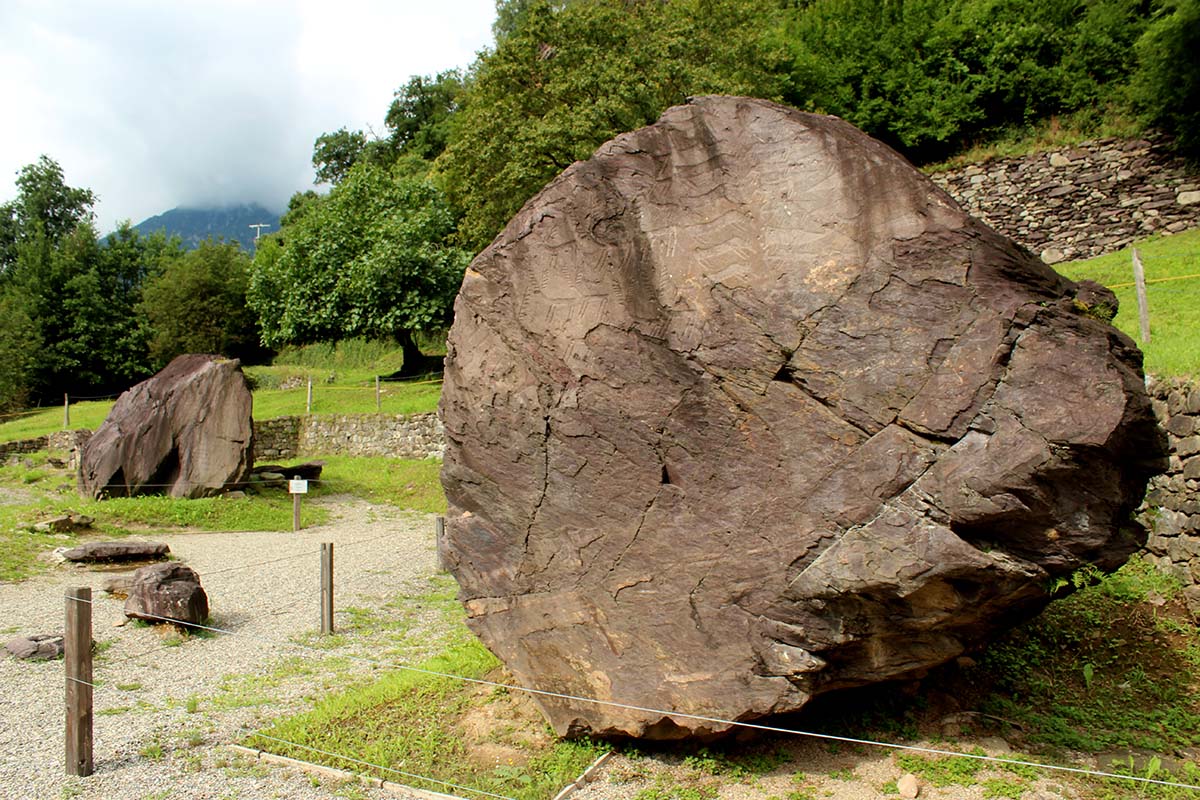The first nucleus of the Library’s book collection was born in the monastery of the Congregation of the Camaldolesi, which until the sixteenth century was attached to the Basilica of Sant’Apollinare in Classe.
Only in 1512, following the battle of Ravenna during which the monastery was sacked, was the decision taken to move the seat within the city walls.
The construction of the new Classense Abbey took place in 1513 on the site of a former hospital, in what is now via Beccarini.
In 1803 the prestigious monastic library of the Camaldolesi became the Civic Library of Ravenna, following the Napoleonic law of suppression of monastic property.
The Aula Magna is the room that most impresses those who visit it.
It was realized between the XVII and the XVIII century by the abbot Pietro Canneti and decorated with statues, stuccoes, finely carved wooden shelves and paintings by Francesco Mancini.
The Classense holds about 750 ancient manuscripts, 350 of which are codices dating from between the 10th and 16th centuries. Among these, a special mention goes to the Aristophanes, the only surviving copy that contains all eleven of the Greek playwright’s comedies, purchased by Pietro Canneti in Pisa in 1712.
The ancient printed books, printed between the fifteenth and eighteenth centuries, exceed 80 thousand. Among the correspondence preserved, there is that of the poet Lord Byron and Teresa Gamba Guiccioli, with whom he spent some happy years in Ravenna.
On the ground floor, there is the Sala Dantesca, where you can admire an important work by the painter Luca Longhi (1507-1590).
Le nozze di Cana was commissioned by the abbot don Pietro Bagnoli da Bagnacavallo in 1579, and was executed the following year for 200 gold scudi.
It seems that the painter used as models the client, the historian Girolamo Rossi, Cavalier Pomponio Spreti, but also himself and his children Francesco and Barbara.
